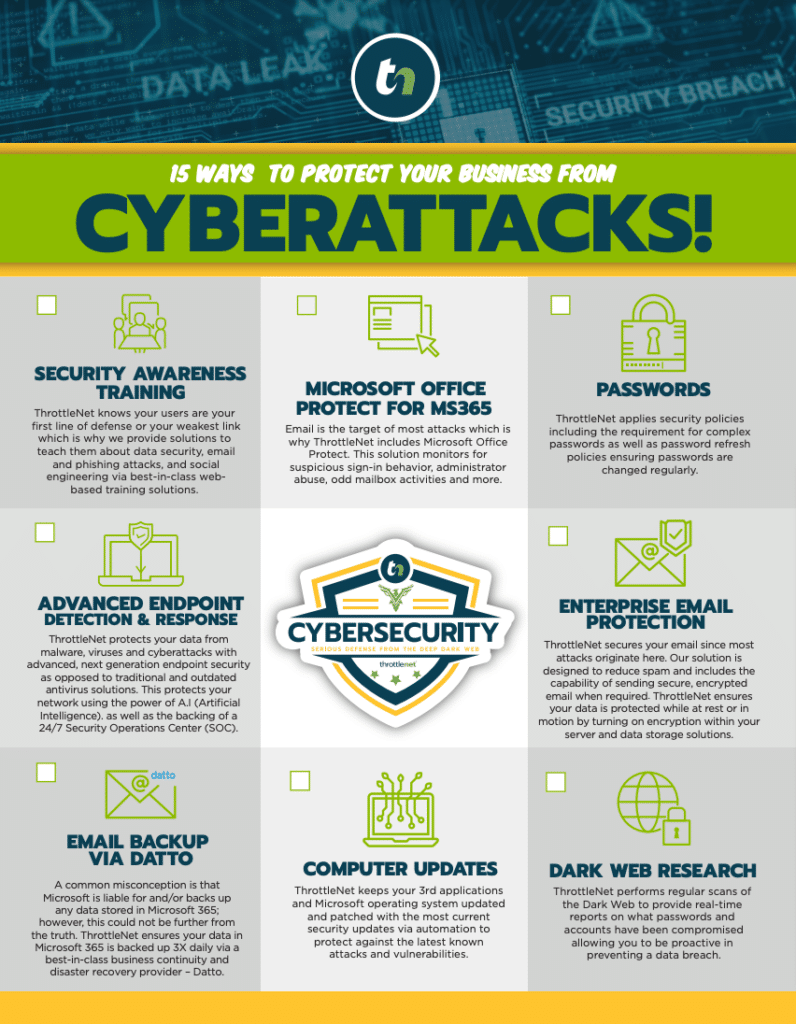In today’s rapidly evolving digital landscape, having a knowledgeable guide in the form of a Chief Information Officer (CIO) is no longer a luxury reserved for large enterprises—it’s essential for businesses of all sizes. For small to medium-sized businesses (SMBs) that may lack the resources for a full-time CIO, a Virtual Chief Information Officer (vCIO) offers an invaluable alternative. But what is a virtual chief information officer?
Today we’ll discuss that along with the key role a vCIO plays, including budget planning, alignment with business objectives, best practices implementation, strategic consulting, and cybersecurity—all of which are crucial for scaling a business safely and effectively.

What is a Virtual Chief Information Officer?
A vCIO (Virtual Chief Information Officer) is an outsourced IT professional who provides the expertise and strategic oversight of a Chief Information Officer without the cost of a full-time executive. In the case of ThrottleNet, a vCIO is automatically included in our solution, making it ideal for SMBs needing high-level IT guidance. They focus on aligning the organization’s IT infrastructure and strategy with business objectives, helping the company make informed technology decisions, mitigate risks, and leverage IT for growth.
The Key Roles and Benefits of a vCIO
1. Budget Planning and Management
Budgeting is critical to any business, especially as IT costs rise with increasing demand for digital transformation. A vCIO helps businesses:
- Create a Realistic IT Budget: By understanding the organization’s short and long-term goals, the vCIO can help forecast IT expenditures accurately, ensuring that the company invests in the right technologies while avoiding unnecessary expenses. In order to provide visibility of your budget, ThrottleNet includes access to our Strategic Roadmap which allows you and your vCIO to create a budget for hardware and software purchases over the course of the next 1, 3 or 5 years.
- Optimize Technology Investments: The vCIO evaluates existing assets and identifies cost-saving opportunities, such as consolidating redundant software or investing in cloud solutions.
- Forecast Future Needs: Technology needs evolve, and a vCIO can anticipate future requirements based on trends and business growth plans, ensuring the company remains prepared without facing sudden costs. This may be something as simple as creating a refresh schedule for your hardware or more complex such as planning to perform a migration to Azure.
A well-planned IT budget ensures that the business can scale its technological investments in line with growth, while also keeping costs manageable.
2. Alignment with Business Objectives
IT should be a driver of business success, not just a back-office function. A vCIO works closely with executive leadership to:
- Align IT and Business Goals: The vCIO ensures that technology initiatives support broader business objectives, such as increasing revenue, improving customer experience, or expanding into new markets. An example might include cybersecurity requirements to partner with certain clients or prospects.
- Create Measurable IT KPIs: By establishing key performance indicators (KPIs) that align with business goals, the vCIO helps executives gauge the effectiveness of IT investments. ThrottleNet measures KPI’s for virtually every interaction our engineers have. This includes First Call Resolution (FCR), same day resolution and average response time ensuring we are providing best in class support.
- Promote a Strategic Role for IT: The vCIO advocates for IT as a value-added function that can drive growth and innovation, ensuring that leadership sees IT as a strategic partner rather than a cost center.
When IT is aligned with business goals, technology becomes a powerful enabler for growth, driving productivity, efficiency, and competitiveness.
3. Implementation of IT Best Practices
One of the primary roles of a vCIO is to bring best practices to an organization, improving efficiency and reducing risks. This includes:
- Standardizing IT Operations: By implementing standard procedures and best practices for system management, data storage, and IT support, the vCIO ensures smooth and reliable operations.
- Establishing Cybersecurity Protocols: A vCIO establishes cybersecurity best practices that align with industry standards, ensuring data security, regulatory compliance, and minimized risk of cyberattacks. Granted, this requires clients follow our recommendations as your vCIO is there to advise and inform; however, the choice to implement their recommendations is yours.
- Improving Productivity through Process Optimization: A vCIO identifies ways to enhance workflows, reduce inefficiencies, and streamline processes, ensuring that technology is used optimally throughout the business.
By implementing best practices, businesses can maintain efficient and secure operations, reduce downtime, and maximize the ROI on their technology investments.
4. Strategic Consulting and Go-Forward IT Strategy
As businesses grow, so do their IT needs. A vCIO serves as a strategic advisor, helping companies plan for the future by:
- Creating a Technology Roadmap: The vCIO develops a forward-looking strategy, identifying key technology investments needed to support growth over time, such as migrating to the cloud, upgrading infrastructure, or integrating new software.
- Evaluating Emerging Technologies: By staying updated on technology trends, the vCIO helps the business assess which innovations, like artificial intelligence or IoT, could provide a competitive advantage.
- Planning for Scalability: A vCIO ensures that the IT environment can scale as the company grows. This includes choosing flexible solutions that accommodate increased data, additional users, and expanded operations without requiring a complete overhaul.
A strategic IT roadmap ensures that a business remains agile and can quickly adapt to new opportunities, competitive pressures, and market changes.
5. Cybersecurity and Risk Management
Cybersecurity is one of the most critical aspects of a vCIO’s role, as cyber threats continue to rise and evolve. A vCIO helps protect the business by:
- Conducting Security Audits: Our vCIO’s work in conjunction with our dedicated cybersecurity team to regularly assesses your organization’s security posture, identifying vulnerabilities in systems, software, and processes that could lead to breaches or data leaks.
- Developing a Cybersecurity Strategy: The vCIO creates a robust cybersecurity plan, implementing measures like endpoint protection, firewalls, access controls, and multi-factor authentication (MFA) to secure sensitive data.
- Establishing Data Backup and Disaster Recovery Plans: A vCIO ensures that there are regular, automated backups and a comprehensive disaster recovery plan in place to minimize downtime in the event of a cyberattack or data loss.
By focusing on proactive security measures and employee education, a vCIO helps businesses build a strong defense against cyber threats, reducing risk and ensuring the organization can respond quickly to incidents.
The Advantages of a vCIO for Small and Medium-Sized Businesses
For small and medium-sized businesses, a full-time CIO might not be financially feasible, but a vCIO offers the same expertise and guidance at a fraction of the cost. The flexibility of a vCIO allows businesses to leverage their expertise as needed—whether it’s for short-term projects, quarterly strategy meetings, or ongoing technology management.
Key Benefits of a vCIO:
- Cost-Effective Expertise: Gain access to executive-level IT leadership without the high salary and benefits cost associated with hiring a full-time CIO.
- Improved Decision-Making: A vCIO’s strategic insight helps business leaders make informed decisions about technology, reducing wasted spending and ensuring investments are aligned with goals.
- Enhanced Scalability: With a clear roadmap and adaptable IT infrastructure, businesses can grow confidently, knowing that their technology will support expansion.
- Reduced Risk of Cyberattacks: A vCIO’s expertise in cybersecurity and risk management helps reduce the chance of data breaches and cyber incidents, protecting both the company’s data and reputation.
- Focus on Core Business: With a vCIO handling IT strategy and management, executives can focus on what they do best—running and growing the business.
In a world where technology is constantly advancing and cyber threats are ever-present, having a strategic IT leader is no longer optional. A Virtual Chief Information Officer (vCIO) brings the expertise, strategic foresight, and security focus needed to navigate the complexities of modern business IT. From budgeting and alignment to best practices and cybersecurity, a vCIO is an essential partner for businesses that want to grow, scale, and protect their assets without the full-time cost of an in-house CIO.
With a vCIO, small and medium-sized businesses gain the ability to leverage technology strategically, ensuring their IT investments drive growth, minimize risks, and position the organization for a successful future.

Chris Montgomery
ThrottleNet Sales Director
cmontgomery@throttlenet.com



